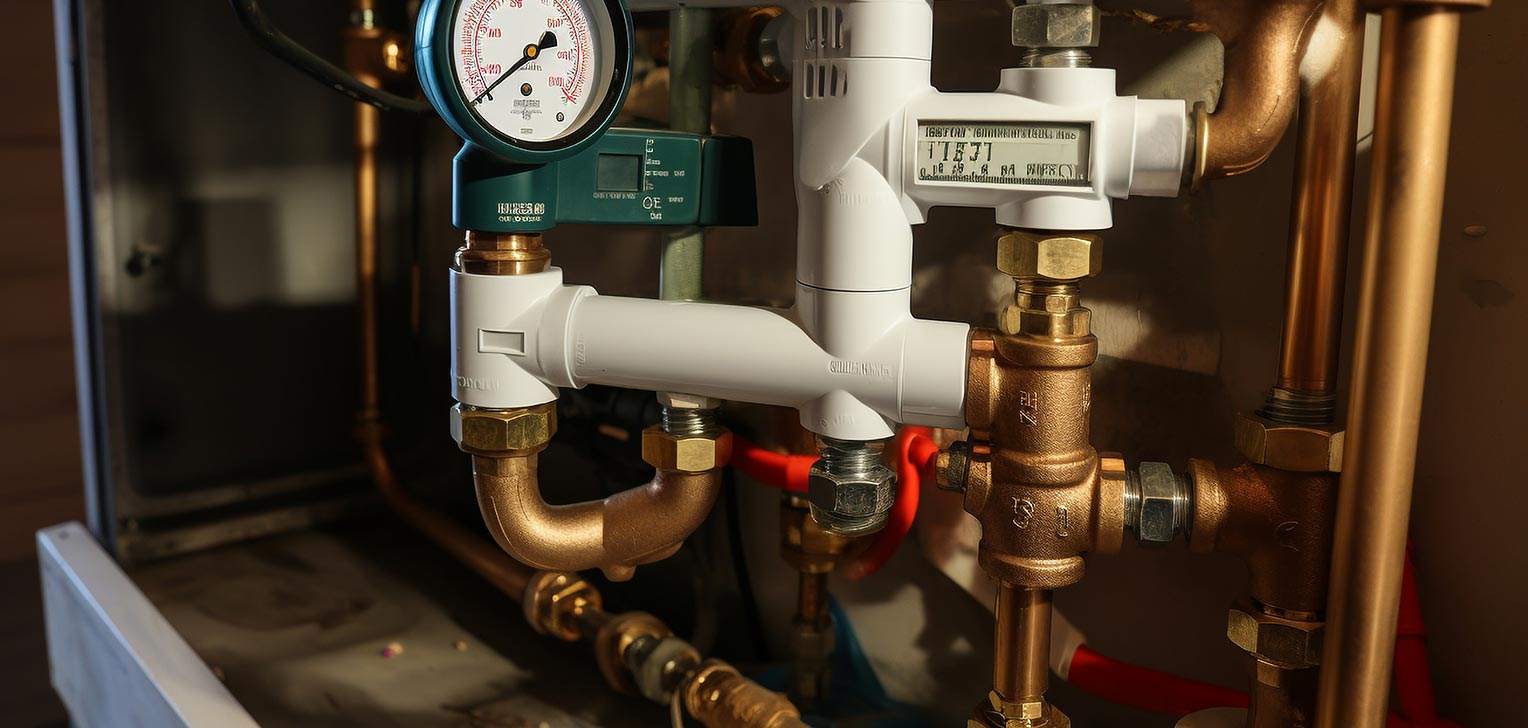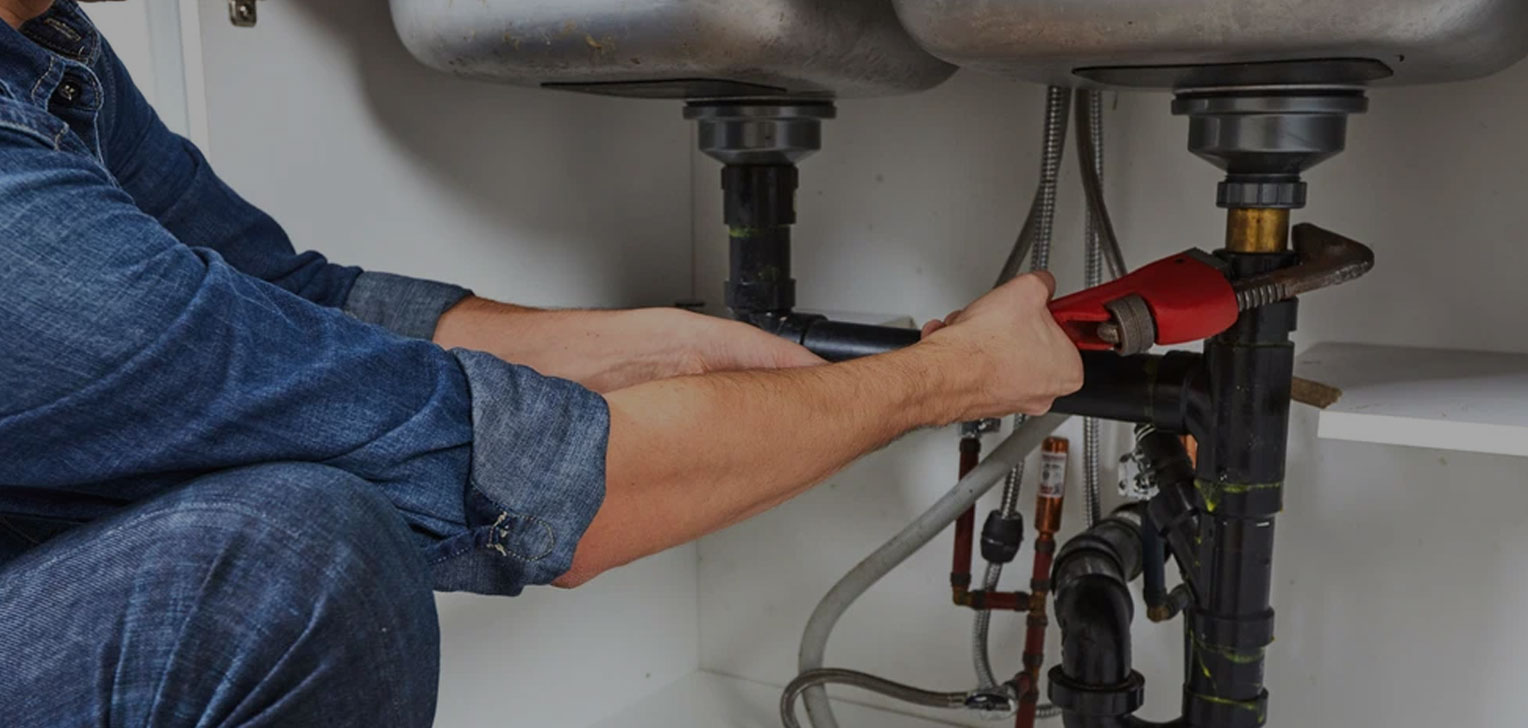Specializing In The Production And Sales Of High-tech, High-performance, And Environmentally Friendly New Plastic Pipelines.

ZHEJIANG AQUAPROM PURIFYING TECHNOLOGY CO., LTD. is an enterprise specializing in manufacturing seamless butt-welding aluminum-plastic composite piping, bronze couplers and seamless butt-wielding aluminum-plastic composite crosslinking heating piping, which are all strongly featured with high intensity, erosion resistibility, far-reaching applicability and long durability. The “Jieda”-brand seamless butt-welding aluminum-plastic composite piping and pipe fitting, because of their structure, easy-to-install trait and reliable connectivity, have become well accepted among the mass users and are widely used in construction projects.
Nowadays, ZHEJIANG AQUAPROM PURIFYING TECHNOLOGY CO., LTD. products collection has been widely used in tap water, gas, solar energy, petroleum, chemical engineering, metallurgy, pharmacy, papermaking, foodstuffs, textile, environment protection, etc. Also, the products are outbound to countries like Romania, South Korea, Japan, Russia, etc.
-
0
Was founded in
-
0+
Industry experience
-
0
Number of employees
-
0+
Automatic production line
ZHEJIANG AQUAPROM PURIFYING TECHNOLOGY CO., LTD. pledges to keep conforming to its management principle of “to start up by trust, to survive by quality and to develop by brand names”
The seamless butt-welded aluminum-plastic composite pipes, copper joints produced by our company, and seamless butt-welded aluminum plastic composite cross-linked hot water pipes, have advantages such as high strength, corrosion resistance, wide applicability, and long service life.
-
 High
High
Strength -
 Wide Application
Wide Application
Range -
 Corrosion
Corrosion
Resistance -
 Long Service
Long Service
Life
ZHEJIANG AQUAPROM PURIFYING TECHNOLOGY CO., LTD. products collection has been widely used in tap water, gas, solar energy, petroleum, chemical engineering, metallurgy, pharmacy, papermaking, foodstuffs, textile, environment protection, etc.
Read More >

Our PPR Ball Valve,PERT/PEX Pipes and other products widely used in the industries of tap water, gas, solar energy, petroleum, chemical engineering, metallurgy, pharmacy, papermaking, textile, environment protection, etc.
-
Water Supply
-
Chemical Industry
-
Solar Energy
-
Kitchen Sewer
-
Natural Gas
News and Information
-
22 Mar
Authentic Reliable Quality Naturally Stands Out We have provided 3D printable files and a detailed walkthrough for upgrading the Z-axis of a Prusa i3 RepRap 3D printer with a screw. Not for the time and certainly not for the last, it would seem that a round of applause is due for an inanimate rod. Many cheap and cheerful DIY 3D printers, such as the Prusa i3 and other RepRap machines, use a threaded rod for their z-axis. The threaded rod is a cheap piece of equipment, but many users—Daniel included—have encountered irresolvable problems when using the oblong piece of metal. The use of a threaded rod as the z-axis of a 3D printer is standard for many budget machines, but notable problems include backlash and wobble, which can be eliminated with the use of a screw. Threaded rod is, after all, not made to be used as a precise positioning tool. It is built to fasten and to remain stationary at all times. Threaded rods can often be slightly bent, and they get dirty very quickly. “After a year of printing, it can be seen that threaded rods are not meant for this kind of application,” Daniel explains in his blog post. “The rod…squeaks pretty loudly during movement and its threads get full of black goo that consists of dust, oil and metal shavings from the friction with the nut.” To improve performance on his Prusa i3 3D printer, “A screw is much more rigid, it’s very hard so it doesn’t bend, it has a very smooth surface and its shape is specifically designed for moving inside a nut.” To facilitate the upgrade, he had to replace all of the z-axis mounts on his 3D printer. He designed and 3D printed these new pieces in PLA, at a 0.2mm layer height at 200°C. All of his 3D-printed parts can be downloaded for free on the project’s Thingiverse page. The upgraded z-axis has eliminated the squeaking and wobbling produced by the threaded rod. But is the upgrade worthwhile? The debate between threaded rod advocates and screw supporters goes back years. Generally, defenders of the humble threaded rod have argued that the cost of a screw eclipses the small improvement offered and that proper maintenance of a threaded rod can to similarly high performance. Screw backers typically point to the improved accuracy and precision of their preferred device. Where do you stand on the eternal rod debate?
Read More -
22 Mar
Authentic Reliable Quality Naturally Stands Out Provided 3D printable files and a detailed walkthrough for upgrading the Z-axis of a Prusa i3 RepRap 3D printer with a screw. Not for the time and certainly not for the last, it would seem that a round of applause is due for an inanimate rod. Many cheap and cheerful DIY 3D printers, such as the Prusa i3 and other RepRap machines, use a threaded rod for their z-axis. The threaded rod is a cheap piece of equipment, but many users—Daniel included—have encountered irresolvable problems when using the oblong piece of metal. The use of a threaded rod as the z-axis of a 3D printer is standard for many budget machines, but notable problems include backlash and wobble, which can be eliminated with the use of a screw. Threaded rod is, after all, not made to be used as a precise positioning tool. It is built to fasten and to remain stationary at all times. Threaded rods can often be slightly bent, and they get dirty very quickly. “After a year of printing, it can be seen that threaded rods are not meant for this kind of application,” Daniel explains in his blog post. “The rod…squeaks pretty loudly during movement and its threads get full of black goo that consists of dust, oil and metal shavings from the friction with the nut.” To improve performance on his Prusa i3 3D printer, “A screw is much more rigid, it’s very hard so it doesn’t bend, it has a very smooth surface and its shape is specifically designed for moving inside a nut.” To facilitate the upgrade, had to replace all of the z-axis mounts on his 3D printer. He designed and 3D printed these new pieces in PLA, at a 0.2mm layer height at 200°C. All of his 3D-printed parts can be downloaded for free on the project’s Thingiverse page. The upgraded z-axis has eliminated the squeaking and wobbling produced by the threaded rod. But is the upgrade worthwhile? The debate between threaded rod advocates and screw supporters goes back years. Generally, defenders of the humble threaded rod have argued that the cost of a screw eclipses the small improvement offered and that proper maintenance of a threaded rod can to similarly high performance. screw backers typically point to the improved accuracy and precision of their preferred device. Where do you stand on the eternal rod debate?
Read More -
22 Mar
Authentic Reliable Quality Naturally Stands Out Provided 3D printable files and a detailed walkthrough for upgrading the Z-axis of a Prusa i3 RepRap 3D printer with a screw. Not for the time and certainly not for the last, it would seem that a round of applause is due for an inanimate rod. Many cheap and cheerful DIY 3D printers, such as the Prusa i3 and other RepRap machines, use a threaded rod for their z-axis. The threaded rod is a cheap piece of equipment, but many users—Daniel included—have encountered irresolvable problems when using the oblong piece of metal. The use of a threaded rod as the z-axis of a 3D printer is standard for many budget machines, but notable problems include backlash and wobble, which can be eliminated with the use of a screw. Threaded rod is, after all, not made to be used as a precise positioning tool. It is built to fasten and to remain stationary at all times. Threaded rods can often be slightly bent, and they get dirty very quickly. “After a year of printing, it can be seen that threaded rods are not meant for this kind of application,” Daniel explains in his blog post. “The rod…squeaks pretty loudly during movement and its threads get full of black goo that consists of dust, oil and metal shavings from the friction with the nut.” To improve performance on his Prusa i3 3D printer, “A screw is much more rigid, it’s very hard so it doesn’t bend, it has a very smooth surface and its shape is specifically designed for moving inside a nut.” To facilitate the upgrade, had to replace all of the z-axis mounts on his 3D printer. He designed and 3D printed these new pieces in PLA, at a 0.2mm layer height at 200°C. All of his 3D-printed parts can be downloaded for free on the project’s Thingiverse page. The upgraded z-axis has eliminated the squeaking and wobbling produced by the threaded rod. But is the upgrade worthwhile? The debate between threaded rod advocates and screw supporters goes back years. Generally, defenders of the humble threaded rod have argued that the cost of a screw eclipses the small improvement offered and that proper maintenance of a threaded rod can to similarly high performance. screw backers typically point to the improved accuracy and precision of their preferred device. Where do you stand on the eternal rod debate?
Read More -
22 Mar
Authentic Reliable Quality Naturally Stands Out Provided 3D printable files and a detailed walkthrough for upgrading the Z-axis of a Prusa i3 RepRap 3D printer with a screw. Not for the time and certainly not for the last, it would seem that a round of applause is due for an inanimate rod. Many cheap and cheerful DIY 3D printers, such as the Prusa i3 and other RepRap machines, use a threaded rod for their z-axis. The threaded rod is a cheap piece of equipment, but many users—Daniel included—have encountered irresolvable problems when using the oblong piece of metal. The use of a threaded rod as the z-axis of a 3D printer is standard for many budget machines, but notable problems include backlash and wobble, which can be eliminated with the use of a screw. Threaded rod is, after all, not made to be used as a precise positioning tool. It is built to fasten and to remain stationary at all times. Threaded rods can often be slightly bent, and they get dirty very quickly. “After a year of printing, it can be seen that threaded rods are not meant for this kind of application,” Daniel explains in his blog post. “The rod…squeaks pretty loudly during movement and its threads get full of black goo that consists of dust, oil and metal shavings from the friction with the nut.” To improve performance on his Prusa i3 3D printer, “A screw is much more rigid, it’s very hard so it doesn’t bend, it has a very smooth surface and its shape is specifically designed for moving inside a nut.” To facilitate the upgrade, had to replace all of the z-axis mounts on his 3D printer. He designed and 3D printed these new pieces in PLA, at a 0.2mm layer height at 200°C. All of his 3D-printed parts can be downloaded for free on the project’s Thingiverse page. The upgraded z-axis has eliminated the squeaking and wobbling produced by the threaded rod. But is the upgrade worthwhile? The debate between threaded rod advocates and screw supporters goes back years. Generally, defenders of the humble threaded rod have argued that the cost of a screw eclipses the small improvement offered and that proper maintenance of a threaded rod can to similarly high performance. screw backers typically point to the improved accuracy and precision of their preferred device. Where do you stand on the eternal rod debate?
Read More -
22 Mar
Authentic Reliable Quality Naturally Stands Out Provided 3D printable files and a detailed walkthrough for upgrading the Z-axis of a Prusa i3 RepRap 3D printer with a screw. Not for the time and certainly not for the last, it would seem that a round of applause is due for an inanimate rod. Many cheap and cheerful DIY 3D printers, such as the Prusa i3 and other RepRap machines, use a threaded rod for their z-axis. The threaded rod is a cheap piece of equipment, but many users—Daniel included—have encountered irresolvable problems when using the oblong piece of metal. The use of a threaded rod as the z-axis of a 3D printer is standard for many budget machines, but notable problems include backlash and wobble, which can be eliminated with the use of a screw. Threaded rod is, after all, not made to be used as a precise positioning tool. It is built to fasten and to remain stationary at all times. Threaded rods can often be slightly bent, and they get dirty very quickly. “After a year of printing, it can be seen that threaded rods are not meant for this kind of application,” Daniel explains in his blog post. “The rod…squeaks pretty loudly during movement and its threads get full of black goo that consists of dust, oil and metal shavings from the friction with the nut.” To improve performance on his Prusa i3 3D printer, “A screw is much more rigid, it’s very hard so it doesn’t bend, it has a very smooth surface and its shape is specifically designed for moving inside a nut.” To facilitate the upgrade, had to replace all of the z-axis mounts on his 3D printer. He designed and 3D printed these new pieces in PLA, at a 0.2mm layer height at 200°C. All of his 3D-printed parts can be downloaded for free on the project’s Thingiverse page. The upgraded z-axis has eliminated the squeaking and wobbling produced by the threaded rod. But is the upgrade worthwhile? The debate between threaded rod advocates and screw supporters goes back years. Generally, defenders of the humble threaded rod have argued that the cost of a screw eclipses the small improvement offered and that proper maintenance of a threaded rod can to similarly high performance. screw backers typically point to the improved accuracy and precision of their preferred device. Where do you stand on the eternal rod debate?
Read More -
22 Mar
Authentic Reliable Quality Naturally Stands Out Provided 3D printable files and a detailed walkthrough for upgrading the Z-axis of a Prusa i3 RepRap 3D printer with a screw. Not for the time and certainly not for the last, it would seem that a round of applause is due for an inanimate rod. Many cheap and cheerful DIY 3D printers, such as the Prusa i3 and other RepRap machines, use a threaded rod for their z-axis. The threaded rod is a cheap piece of equipment, but many users—Daniel included—have encountered irresolvable problems when using the oblong piece of metal. The use of a threaded rod as the z-axis of a 3D printer is standard for many budget machines, but notable problems include backlash and wobble, which can be eliminated with the use of a screw. Threaded rod is, after all, not made to be used as a precise positioning tool. It is built to fasten and to remain stationary at all times. Threaded rods can often be slightly bent, and they get dirty very quickly. “After a year of printing, it can be seen that threaded rods are not meant for this kind of application,” Daniel explains in his blog post. “The rod…squeaks pretty loudly during movement and its threads get full of black goo that consists of dust, oil and metal shavings from the friction with the nut.” To improve performance on his Prusa i3 3D printer, “A screw is much more rigid, it’s very hard so it doesn’t bend, it has a very smooth surface and its shape is specifically designed for moving inside a nut.” To facilitate the upgrade, had to replace all of the z-axis mounts on his 3D printer. He designed and 3D printed these new pieces in PLA, at a 0.2mm layer height at 200°C. All of his 3D-printed parts can be downloaded for free on the project’s Thingiverse page. The upgraded z-axis has eliminated the squeaking and wobbling produced by the threaded rod. But is the upgrade worthwhile? The debate between threaded rod advocates and screw supporters goes back years. Generally, defenders of the humble threaded rod have argued that the cost of a screw eclipses the small improvement offered and that proper maintenance of a threaded rod can to similarly high performance. screw backers typically point to the improved accuracy and precision of their preferred device. Where do you stand on the eternal rod debate?
Read More -
22 Mar
Authentic Reliable Quality Naturally Stands Out Provided 3D printable files and a detailed walkthrough for upgrading the Z-axis of a Prusa i3 RepRap 3D printer with a screw. Not for the time and certainly not for the last, it would seem that a round of applause is due for an inanimate rod. Many cheap and cheerful DIY 3D printers, such as the Prusa i3 and other RepRap machines, use a threaded rod for their z-axis. The threaded rod is a cheap piece of equipment, but many users—Daniel included—have encountered irresolvable problems when using the oblong piece of metal. The use of a threaded rod as the z-axis of a 3D printer is standard for many budget machines, but notable problems include backlash and wobble, which can be eliminated with the use of a screw. Threaded rod is, after all, not made to be used as a precise positioning tool. It is built to fasten and to remain stationary at all times. Threaded rods can often be slightly bent, and they get dirty very quickly. “After a year of printing, it can be seen that threaded rods are not meant for this kind of application,” Daniel explains in his blog post. “The rod…squeaks pretty loudly during movement and its threads get full of black goo that consists of dust, oil and metal shavings from the friction with the nut.” To improve performance on his Prusa i3 3D printer, “A screw is much more rigid, it’s very hard so it doesn’t bend, it has a very smooth surface and its shape is specifically designed for moving inside a nut.” To facilitate the upgrade, had to replace all of the z-axis mounts on his 3D printer. He designed and 3D printed these new pieces in PLA, at a 0.2mm layer height at 200°C. All of his 3D-printed parts can be downloaded for free on the project’s Thingiverse page. The upgraded z-axis has eliminated the squeaking and wobbling produced by the threaded rod. But is the upgrade worthwhile? The debate between threaded rod advocates and screw supporters goes back years. Generally, defenders of the humble threaded rod have argued that the cost of a screw eclipses the small improvement offered and that proper maintenance of a threaded rod can to similarly high performance. screw backers typically point to the improved accuracy and precision of their preferred device. Where do you stand on the eternal rod debate?
Read More -
22 Mar
Authentic Reliable Quality Naturally Stands Out Provided 3D printable files and a detailed walkthrough for upgrading the Z-axis of a Prusa i3 RepRap 3D printer with a screw. Not for the time and certainly not for the last, it would seem that a round of applause is due for an inanimate rod. Many cheap and cheerful DIY 3D printers, such as the Prusa i3 and other RepRap machines, use a threaded rod for their z-axis. The threaded rod is a cheap piece of equipment, but many users—Daniel included—have encountered irresolvable problems when using the oblong piece of metal. The use of a threaded rod as the z-axis of a 3D printer is standard for many budget machines, but notable problems include backlash and wobble, which can be eliminated with the use of a screw. Threaded rod is, after all, not made to be used as a precise positioning tool. It is built to fasten and to remain stationary at all times. Threaded rods can often be slightly bent, and they get dirty very quickly. “After a year of printing, it can be seen that threaded rods are not meant for this kind of application,” Daniel explains in his blog post. “The rod…squeaks pretty loudly during movement and its threads get full of black goo that consists of dust, oil and metal shavings from the friction with the nut.” To improve performance on his Prusa i3 3D printer, “A screw is much more rigid, it’s very hard so it doesn’t bend, it has a very smooth surface and its shape is specifically designed for moving inside a nut.” To facilitate the upgrade, had to replace all of the z-axis mounts on his 3D printer. He designed and 3D printed these new pieces in PLA, at a 0.2mm layer height at 200°C. All of his 3D-printed parts can be downloaded for free on the project’s Thingiverse page. The upgraded z-axis has eliminated the squeaking and wobbling produced by the threaded rod. But is the upgrade worthwhile? The debate between threaded rod advocates and screw supporters goes back years. Generally, defenders of the humble threaded rod have argued that the cost of a screw eclipses the small improvement offered and that proper maintenance of a threaded rod can to similarly high performance. screw backers typically point to the improved accuracy and precision of their preferred device. Where do you stand on the eternal rod debate?
Read More -
22 Mar
Authentic Reliable Quality Naturally Stands Out Provided 3D printable files and a detailed walkthrough for upgrading the Z-axis of a Prusa i3 RepRap 3D printer with a screw. Not for the time and certainly not for the last, it would seem that a round of applause is due for an inanimate rod. Many cheap and cheerful DIY 3D printers, such as the Prusa i3 and other RepRap machines, use a threaded rod for their z-axis. The threaded rod is a cheap piece of equipment, but many users—Daniel included—have encountered irresolvable problems when using the oblong piece of metal. The use of a threaded rod as the z-axis of a 3D printer is standard for many budget machines, but notable problems include backlash and wobble, which can be eliminated with the use of a screw. Threaded rod is, after all, not made to be used as a precise positioning tool. It is built to fasten and to remain stationary at all times. Threaded rods can often be slightly bent, and they get dirty very quickly. “After a year of printing, it can be seen that threaded rods are not meant for this kind of application,” Daniel explains in his blog post. “The rod…squeaks pretty loudly during movement and its threads get full of black goo that consists of dust, oil and metal shavings from the friction with the nut.” To improve performance on his Prusa i3 3D printer, “A screw is much more rigid, it’s very hard so it doesn’t bend, it has a very smooth surface and its shape is specifically designed for moving inside a nut.” To facilitate the upgrade, had to replace all of the z-axis mounts on his 3D printer. He designed and 3D printed these new pieces in PLA, at a 0.2mm layer height at 200°C. All of his 3D-printed parts can be downloaded for free on the project’s Thingiverse page. The upgraded z-axis has eliminated the squeaking and wobbling produced by the threaded rod. But is the upgrade worthwhile? The debate between threaded rod advocates and screw supporters goes back years. Generally, defenders of the humble threaded rod have argued that the cost of a screw eclipses the small improvement offered and that proper maintenance of a threaded rod can to similarly high performance. screw backers typically point to the improved accuracy and precision of their preferred device. Where do you stand on the eternal rod debate?
Read More -
22 Mar
Authentic Reliable Quality Naturally Stands Out Provided 3D printable files and a detailed walkthrough for upgrading the Z-axis of a Prusa i3 RepRap 3D printer with a screw. Not for the time and certainly not for the last, it would seem that a round of applause is due for an inanimate rod. Many cheap and cheerful DIY 3D printers, such as the Prusa i3 and other RepRap machines, use a threaded rod for their z-axis. The threaded rod is a cheap piece of equipment, but many users—Daniel included—have encountered irresolvable problems when using the oblong piece of metal. The use of a threaded rod as the z-axis of a 3D printer is standard for many budget machines, but notable problems include backlash and wobble, which can be eliminated with the use of a screw. Threaded rod is, after all, not made to be used as a precise positioning tool. It is built to fasten and to remain stationary at all times. Threaded rods can often be slightly bent, and they get dirty very quickly. “After a year of printing, it can be seen that threaded rods are not meant for this kind of application,” Daniel explains in his blog post. “The rod…squeaks pretty loudly during movement and its threads get full of black goo that consists of dust, oil and metal shavings from the friction with the nut.” To improve performance on his Prusa i3 3D printer, “A screw is much more rigid, it’s very hard so it doesn’t bend, it has a very smooth surface and its shape is specifically designed for moving inside a nut.” To facilitate the upgrade, had to replace all of the z-axis mounts on his 3D printer. He designed and 3D printed these new pieces in PLA, at a 0.2mm layer height at 200°C. All of his 3D-printed parts can be downloaded for free on the project’s Thingiverse page. The upgraded z-axis has eliminated the squeaking and wobbling produced by the threaded rod. But is the upgrade worthwhile? The debate between threaded rod advocates and screw supporters goes back years. Generally, defenders of the humble threaded rod have argued that the cost of a screw eclipses the small improvement offered and that proper maintenance of a threaded rod can to similarly high performance. screw backers typically point to the improved accuracy and precision of their preferred device. Where do you stand on the eternal rod debate?
Read More





























